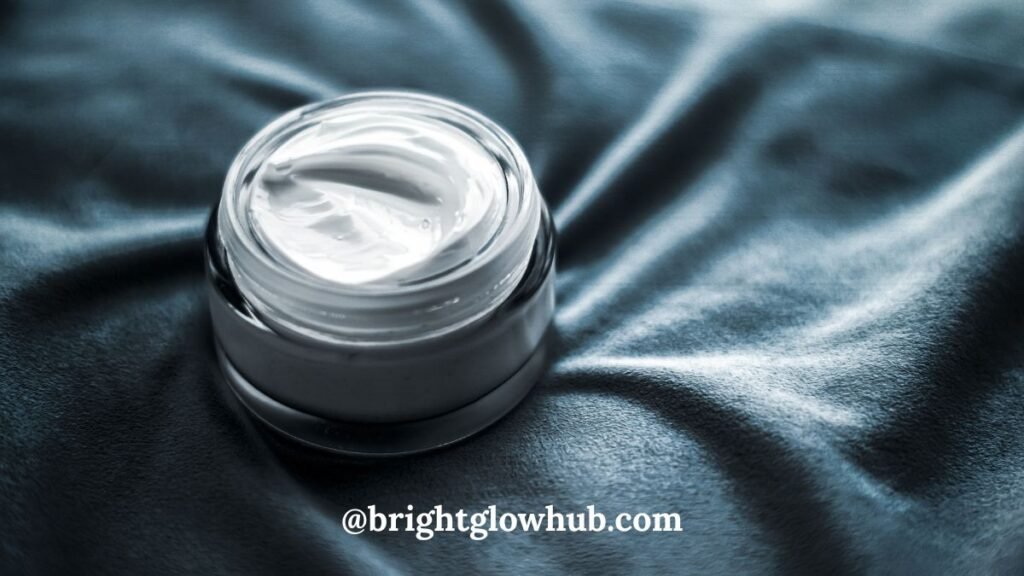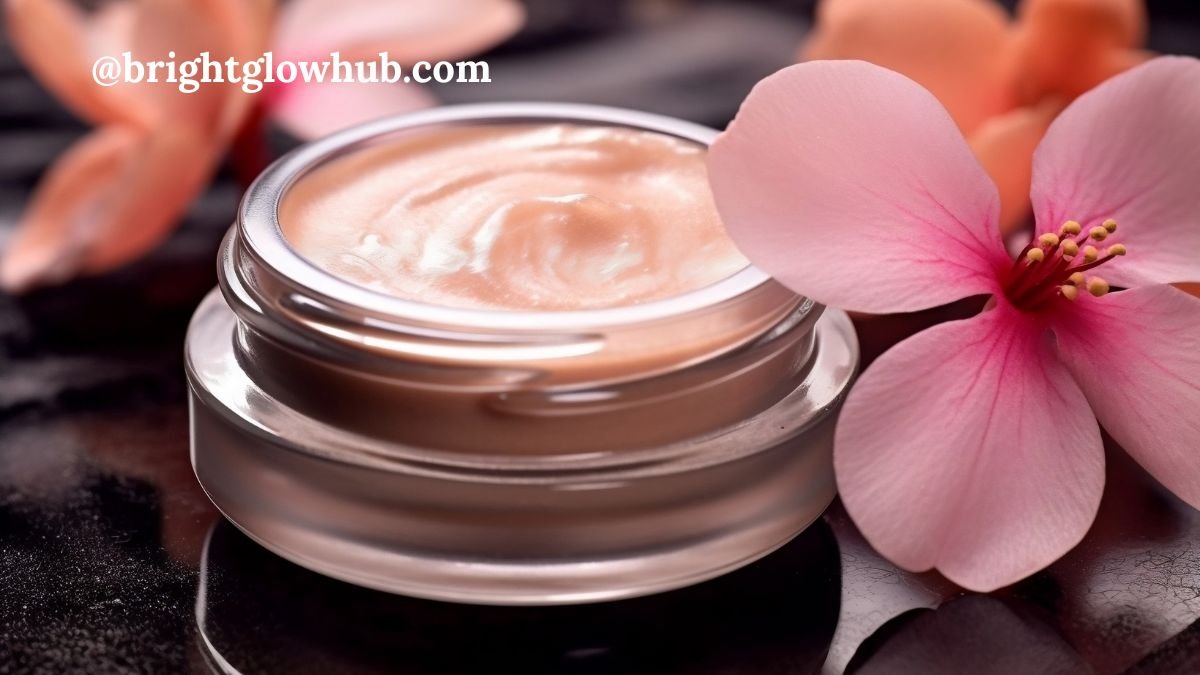Walking down the skincare aisle, shoppers face an overwhelming choice: should they grab a moisturizer with SPF or purchase separate products? This decision impacts both daily routines and long-term skin health. Understanding the difference between moisturizer with SPF and sunscreen helps people make informed choices about their sun protection routine for healthy skin.
Let’s dive into it Moisturizer with SPF vs Separate Sunscreen guide
The quick answer: While moisturizer with SPF offers convenience, separate sunscreen typically provides superior protection. However, the best choice depends on individual lifestyle, skin type, and sun exposure levels. Let’s explore both options in detail to help determine which approach works best.
“⚠️ Disclaimer: We are not dermatologists or medical professionals. This article provides general sunscreen information for educational purposes only. Individual skin types and needs vary. For personalized sun protection advice, especially for babies, children, or if you have skin conditions, consult a healthcare professional or dermatologist.”
Understanding Moisturizer With SPF Benefits
Moisturizer with SPF products combine hydration and sun protection in a single formula. These hybrid products have grown increasingly popular among those seeking streamlined routines. The moisturizer with SPF benefits include:
- Time-saving convenience for busy mornings
- Simplified skincare routine with fewer steps
- Cost-effective option compared to buying two products
- Reduced product overload on the skin
- Better compliance since people are more likely to use one product consistently
- Lightweight feel for those who dislike layering multiple products
These products work well for individuals with minimal sun exposure, primarily indoor lifestyles, or those who prioritize routine simplicity over maximum protection levels.
The Difference Between Moisturizer With SPF and Sunscreen
While both products aim to protect skin from UV damage, several key distinctions exist. Understanding the difference between moisturizer with SPF and sunscreen reveals why dermatologists often recommend separate products for optimal protection.
Formulation Focus
Moisturizers with SPF:
- Primary purpose is hydration
- Sun protection is a secondary benefit
- Often contains lower SPF levels (15-30)
- Formulated for facial skin absorption
- Lighter texture for daily wear
Dedicated Sunscreens:
- Primary purpose is UV protection
- Hydration is sometimes a secondary benefit
- Available in higher SPF levels (30-100+)
- Specifically designed for maximum sun blocking
- Tested rigorously for protection claims
Concentration of Active Ingredients
Dedicated sunscreens contain higher concentrations of UV-filtering ingredients. When manufacturers combine moisturizing and sun-protecting ingredients, compromises in both functions sometimes occur. The sunscreen ingredients vs moisturizer ingredients differ in molecular weight, texture, and intended function, making it challenging to optimize both in a single formula.
Is SPF Moisturizer Enough Protection?

Moisturizer with SPF vs Separate Sunscreen
This question represents one of the most common concerns in skincare. Is SPF moisturizer enough protection for daily needs? The answer depends on several factors.
“SPF ratings indicate level of UVB protection. Consult a dermatologist for advice on what SPF level is appropriate for your skin type and sun exposure.”
When SPF Moisturizer May Be Sufficient
- Minimal outdoor exposure (less than 30 minutes daily)
- Office work with limited sun through windows
- Winter months with reduced UV intensity
- Quick errands without extended outdoor time
- Supplemented protection through hats, shade, and protective clothing
When SPF Moisturizer Falls Short
- Extended outdoor activities like hiking, sports, or beach visits
- High UV index days requiring maximum protection
- History of skin cancer or sun-sensitive conditions
- Medications that increase sun sensitivity
- Working outdoors or near windows with direct sun exposure
The critical issue with is SPF in moisturizer enough for daily use centers on application amount. Most people apply far less moisturizer than needed to achieve the labeled SPF, often getting only 20-50% of the stated protection.
Moisturizer with SPF vs Separate Sunscreen : The Data

Research comparing moisturizer SPF vs sunscreen effectiveness reveals significant differences in real-world protection. Studies show that dedicated sunscreen products consistently outperform SPF moisturizers when measuring:
Protection Coverage
Dedicated Sunscreen:
- 98% of users achieve at least 80% of labeled SPF
- Even application easier to achieve
- Thicker consistency ensures adequate coverage
- Designed for proper sun protection dosage
SPF Moisturizer:
- Only 30-50% of users achieve adequate SPF coverage
- Lighter application due to moisturizer texture expectations
- Tendency to use less product overall
- Gap between labeled and actual protection received
Reapplication Feasibility
The SPF moisturizer vs separate sunscreen debate also involves reapplication practicality. Sunscreen requires reapplication every two hours during sun exposure. Reapplying moisturizer this frequently can lead to overly greasy skin, while dedicated sunscreen formulas are designed for multiple applications without heaviness.
Can Moisturizer Replace Sunscreen?
The straightforward answer to can moisturizer replace sunscreen is: it depends on the situation, but generally, no. For comprehensive sun protection, dedicated sunscreen remains the gold standard. However, certain scenarios allow for moisturizer with SPF as the primary protection method.
Scenarios Where Replacement Works
- Indoor-focused days with air conditioning
- Short outdoor exposure (under 20 minutes)
- Combined with other protection like hats and shade
- High SPF moisturizer (SPF 30+) applied generously
When Replacement Isn’t Advisable
- Beach or pool days requiring water resistance
- Outdoor sports with extended sun exposure
- High-altitude activities where UV is more intense
- Tropical or summer vacations with strong sun
- Medical history of skin cancer or precancerous lesions
SPF in Moisturizer vs Sunscreen: Breaking Down the Comparison

| Feature | Moisturizer with SPF | Separate Sunscreen |
|---|---|---|
| Primary Function | Hydration + light protection | Maximum UV protection |
| SPF Range | Typically 15-30 | Usually 30-100+ |
| Application Amount | Often under-applied | More likely adequate |
| Reapplication | Difficult (too heavy) | Designed for reapplication |
| Water Resistance | Rarely available | Commonly offered |
| Cost per Product | Moderate | Varies widely |
| Convenience | High (one step) | Moderate (two steps) |
| Protection Reliability | Lower in practice | Higher when used correctly |
| Texture Options | Limited | Extensive variety |
| Suitable For | Indoor lifestyle | All sun exposure levels |
This comparison of SPF in moisturizer vs sunscreen highlights why dermatologists typically recommend separate products for anyone with moderate to high sun exposure.
How to Choose Between Moisturizer and Sunscreen
Making the right choice requires honest assessment of lifestyle, skin needs, and sun exposure patterns. Here’s how to choose between moisturizer and sunscreen based on personal factors. Can You Mix Sunscreen with Moisturizer?
Assess Your Sun Exposure
Low Exposure (Indoor-focused):
- Office work with minimal outdoor time
- Quick commutes in covered transportation
- Weekend activities mostly indoors
- Recommendation: High-quality moisturizer with SPF 30+ may suffice
Moderate Exposure (Mixed lifestyle):
- Some outdoor work or hobbies
- Regular walking or outdoor exercise
- Lunch breaks outside
- Recommendation: Moisturizer with SPF on low-exposure days, dedicated sunscreen on outdoor days
High Exposure (Outdoor-focused):
- Outdoor work or sports
- Frequent beach or pool time
- Active outdoor lifestyle
- Recommendation: Always use dedicated broad-spectrum sunscreen
Consider Your Skin Type
Different skin types respond differently to various formulations:
Oily or Acne-Prone Skin:
- Often prefers lightweight textures
- Needs non-comedogenic formulas
- May benefit from separate gel moisturizer and matte sunscreen
- Best sunscreen for oily and acne-prone skin includes oil-free, mineral-based options. Skincare Routines for Oily Sensitive Skin
Dry Skin:
- Requires substantial hydration
- May appreciate moisturizer with SPF for added nourishment
- Could layer both if skin feels tight
- Benefits from cream-based products . Finding the Best Moisturizer for Your Thirsty Skin
Sensitive Skin:
- Needs minimal ingredients
- May react to combined formulas
- Often does better with separate, fragrance-free products
- Physical/mineral sunscreens typically better tolerated. The ‘Less is More’ Revolution: Your Guide to a Calm, Happy & Sensitive Skin Routine
Combination Skin:
- Needs balanced approach
- Might use SPF moisturizer on normal areas
- Additional sunscreen on T-zone if needed
- Lightweight gel formulas work well. Taming the Two-Face: The Ultimate Skincare Guide for Combination Skin
Dermatologist Recommended SPF Products
Medical professionals consistently emphasize that dermatologist recommended SPF products should meet specific criteria regardless of whether someone chooses combination or separate products.
Minimum Requirements
- SPF 30 or higher for adequate protection
- Broad-spectrum protection against UVA and UVB rays
- Water-resistant if sweating or swimming
- Non-comedogenic to prevent breakouts
- Photostable ingredients that don’t degrade quickly in sunlight
How to Choose the Best Sunscreen for Your Skin
Top Dermatologist Recommendations Include
For Moisturizer with SPF:
- Products with clearly labeled SPF 30+
- Formulas containing physical blockers (zinc oxide, titanium dioxide)
- Brands with dermatological testing backing
- Products specifically marketed for facial use
For Separate Sunscreen:
- Dedicated facial sunscreen formulas
- Chemical, physical, or hybrid filters
- Varied textures (fluid, cream, gel) for different preferences
- Specific options for sensitive, oily, or dry skin
Daily Sun Protection for Face: Building the Right Routine
Establishing consistent daily sun protection for face starts with choosing the right products and application method. Consistency matters more than perfection—a routine that someone follows daily beats a perfect routine used sporadically.
Morning Routine With SPF Moisturizer
- Gentle cleanser
- Toner (optional)
- Serum (vitamin C recommended for added protection)
- Moisturizer with SPF 30+ (applied generously)
- Makeup if desired
Key Point: Apply enough moisturizer with SPF to cover the face completely—about 1/4 teaspoon or a nickel-sized amount.
Morning Routine With Separate Products
- Gentle cleanser
- Toner (optional)
- Serum (treatment products)
- Moisturizer
- Wait 2-3 minutes
- Dedicated sunscreen SPF 30-50
- Makeup if desired
Key Point: The sunscreen or moisturizer first question is answered here—moisturizer always comes first, then sunscreen.
Layering Moisturizer and Sunscreen: When You Need Both
Some situations call for layering moisturizer and sunscreen rather than choosing one or the other. This approach provides both optimal hydration and maximum protection. let’s know about Sunscreen or Moisturizer First:
Who Should Layer Both Products?
- People with very dry skin
- Those on prescription retinoids (which increase sensitivity)
- Individuals with compromised skin barriers
- Anyone spending extended time outdoors
- Those living in harsh climates (very dry or very sunny)
How to Apply Moisturizer and Sunscreen Correctly
Proper application technique maximizes the benefits of both products:
Step 1: Apply Moisturizer
- Use on clean, slightly damp skin
- Gently massage until absorbed
- Don’t forget neck and décolletage
Step 2: Wait
- Allow 2-3 minutes for absorption
- This prevents products from mixing on skin surface
Step 3: Apply Sunscreen
- Use generous amount (1/4 teaspoon for face)
- Apply in dots across face, then blend
- Use gentle patting motions, not aggressive rubbing
- Ensure even coverage without gaps
Step 4: Final Wait
- Allow 10-15 minutes before sun exposure
- Wait before applying makeup for best results
Should I Use Both Sunscreen and Moisturizer?
The question should I use both sunscreen and moisturizer depends on individual needs. Here’s a decision framework:
Use Both When:
- Skin feels dry with sunscreen alone
- Using treatment products that compromise barrier
- Very dry climate or winter weather
- Mature skin needing extra nourishment
- Medical conditions affecting skin hydration
One Product May Suffice When:
- Skin is naturally oily
- Living in humid climate
- Minimal outdoor exposure
- Simplified routine is priority
- Using highly moisturizing sunscreen formula
Best Moisturizer With SPF for Face: What to Look For
Finding the best moisturizer with SPF for face involves evaluating several factors beyond just the SPF number.
Essential Features
Protection Level:
- Minimum SPF 30
- Broad-spectrum coverage
- Photostable ingredients
Texture and Feel:
- Absorbs within 5 minutes
- Non-greasy finish
- Doesn’t pill under makeup
- Pleasant (or no) scent
Skin Benefits:
- Adequate hydration for skin type
- Non-irritating formula
- Antioxidants for added protection
- Skin-beneficial extras (niacinamide, hyaluronic acid)
Product Selection by Skin Type
| Skin Type | Ideal Formulation | Key Ingredients | Texture Preference |
|---|---|---|---|
| Oily | Oil-free, mattifying | Niacinamide, zinc oxide | Gel or fluid |
| Dry | Rich, nourishing | Hyaluronic acid, ceramides | Cream or lotion |
| Combination | Balanced, lightweight | Glycerin, antioxidants | Light lotion |
| Sensitive | Minimal, fragrance-free | Zinc oxide, titanium dioxide | Gentle cream |
| Mature | Anti-aging formula | Peptides, vitamin C | Rich cream |
Combining Sunscreen and Moisturizer: Practical Considerations
When combining sunscreen and moisturizer through layering or using a hybrid product, several practical factors influence success.
Product Compatibility
Not all products layer well together. Signs of incompatibility include:
- Pilling (product balling up on skin)
- Uneven texture
- One product preventing the other from absorbing
- White cast or chalky appearance
To avoid these issues:
- Choose products with similar bases (water-based with water-based)
- Allow adequate absorption time between layers
- Use minimal amounts and build up if needed
- Test new combinations on a small area first
SPF Moisturizer Under Makeup: Does It Work?
Using SPF moisturizer under makeup is common practice, but effectiveness depends on application technique. The amount of product needed for adequate SPF protection can feel heavy under foundation.
Making It Work
For Light Makeup:
- Apply moisturizer with SPF generously
- Wait 10-15 minutes before makeup
- Use minimal foundation in thin layers
- Set with powder sunscreen for added protection
For Full Makeup:
- Consider using separate sunscreen under moisturizer with SPF
- Apply primer after sun protection
- Use makeup with additional SPF as bonus layer
- Carry powder sunscreen for touch-ups
Broad-Spectrum Sunscreen vs SPF Cream: Understanding the Terms
The term “broad-spectrum sunscreen vs SPF cream” can confuse consumers. Here’s the clarification:
Broad-Spectrum:
- Refers to protection against both UVA and UVB rays
- Should be on every sun protection product
- Both moisturizers with SPF and sunscreens can be broad-spectrum
SPF Number:
- Indicates level of UVB protection specifically
- SPF 30 blocks about 97% of UVB rays
- SPF 50 blocks about 98% of UVB rays
- Higher SPF requires more active ingredients
Always choose broad-spectrum products regardless of whether using moisturizer with SPF or separate sunscreen. UVA protection prevents aging and skin damage, while UVB protection prevents burning.
The SPF Moisturizer vs Separate Sunscreen Debate: Expert Perspectives
The ongoing SPF moisturizer vs separate sunscreen debate has passionate advocates on both sides. Understanding different expert perspectives helps individuals make informed choices.
Arguments for SPF Moisturizer
Convenience Advocates Say:
- Consistent use matters more than perfect protection
- People skip sunscreen when routines are complicated
- One-step products reduce morning overwhelm
- Modern formulas offer adequate protection for typical lifestyles
Arguments for Separate Sunscreen
Protection Advocates Counter:
- Maximum protection requires dedicated formulas
- Application amount more likely adequate with sunscreen
- Reapplication possible without over-moisturizing
- Water resistance available in sunscreen, rarely in moisturizers
- Higher SPF options for serious protection
The Middle Ground: Many dermatologists suggest a hybrid approach—using moisturizer with SPF on low-exposure days and dedicated sunscreen when spending time outdoors. This practical compromise balances protection with lifestyle reality.
Making Your Decision: A Personalized Approach
Rather than following rigid rules, individuals should assess their unique situations when deciding between these options.
Decision Framework
Choose Moisturizer with SPF If You:
- Spend most time indoors
- Have oily skin that feels heavy with layers
- Prioritize routine simplicity
- Live in moderate climate
- Use adequate product amount consistently
- Supplement with hats and protective clothing
Choose Separate Sunscreen If You:
- Spend significant time outdoors
- Have history of sun damage or skin cancer
- Live in sunny or high-altitude location
- Engage in outdoor sports regularly
- Need water-resistant protection
- Want maximum protection available
Use Both (Layered) If You:
- Have very dry skin
- Use prescription retinoids
- Want maximum protection and hydration
- Live in harsh climate extremes
- Have compromised skin barrier
- Don’t mind extra routine steps
Building Your Optimal Sun Protection Routine for Healthy Skin
Whatever choice someone makes, consistency creates the foundation for a sun protection routine for healthy skin. The best product is the one used daily without fail.
Keys to Success
- Choose products you enjoy using—pleasant texture and scent encourage consistency
- Keep products visible—storing them where you’ll see them improves compliance
- Set realistic expectations—perfect protection matters less than consistent good protection
- Adjust seasonally—needs change between winter and summer
- Reapply when needed—even the best morning application degrades throughout the day
- Don’t forget other areas—neck, chest, hands, and ears need protection too
Long-Term Benefits
Committing to daily sun protection, whether through moisturizer with SPF or separate products, provides numerous benefits:
- Reduced risk of skin cancer
- Prevention of premature aging
- Fewer dark spots and hyperpigmentation
- More even skin tone
- Better overall skin texture
- Maintained skin elasticity
- Reduced inflammation
Conclusion
The choice between moisturizer with SPF and separate sunscreen isn’t one-size-fits-all. While dedicated sunscreen generally provides superior protection, moisturizer with SPF offers convenience that may lead to better compliance for some individuals. The key is understanding personal sun exposure, skin type, and lifestyle needs.
For most people, the ideal approach combines both options strategically—using moisturizer with SPF on low-exposure indoor days and dedicated sunscreen when spending extended time outdoors. This flexible strategy balances optimal protection with realistic routine adherence.
Whatever option someone chooses, the most important factor remains consistent daily use. Sun damage accumulates over time, and even cloudy days expose skin to harmful UV rays. By making sun protection a non-negotiable part of daily skincare—whether through a single moisturizer with SPF or separate layered products—anyone can maintain healthy, protected skin for years to come.
Remember, the difference between moisturizer with SPF and sunscreen matters less than the commitment to protecting skin every single day. Choose products that feel good, fit seamlessly into daily routines, and provide at least SPF 30 broad-spectrum protection. With these elements in place, skin stays healthier, younger-looking, and better protected against sun damage throughout life.
